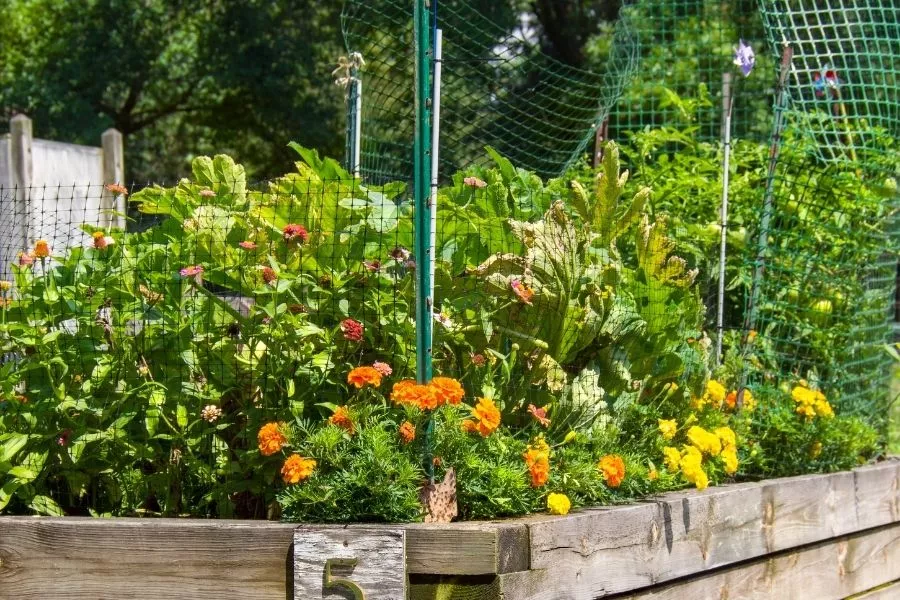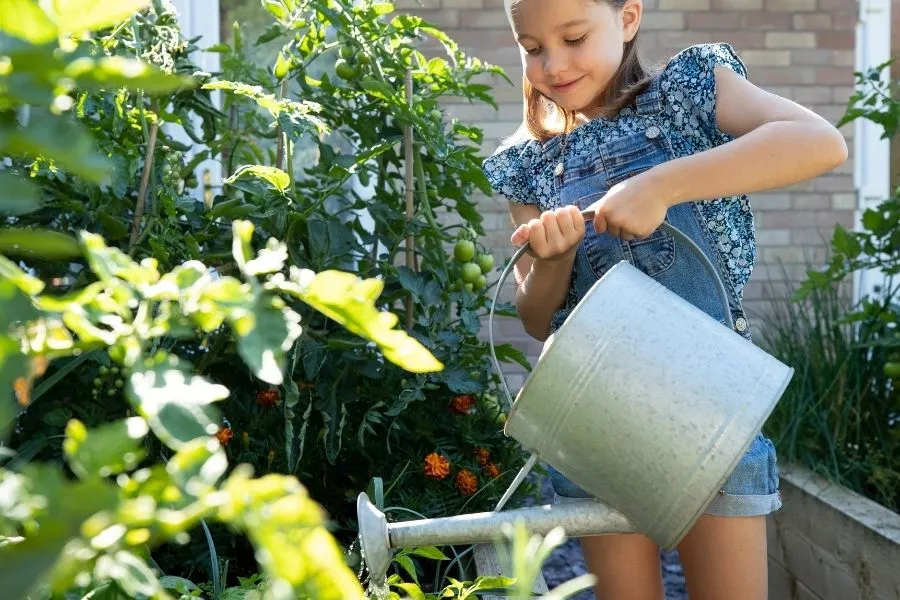If you’re new to the idea of using raised beds in your garden, you might learn how to water a raised garden bed from this expert guide.
It’s going to be pretty easy to water plants in a raised bed. Keep reading to learn the best way to water raised beds so that you can have the best experience possible while gardening.
What is a raised garden bed?

A raised garden bed is an efficient and cost-effective way to grow herbs, fruits, flowers, and vegetables in your backyard. How you water the raised beds, on the other hand, can mean the difference between a healthy, thriving garden and plants that struggle with under-watering, over-watering, and everything in between.
How to water a raised garden bed?
You will need a hose or a watering can. It’s best not to use a water hose for your raised beds. Instead, you will want to use a watering can or maybe even a sprinkler system if you have one. You are not required to have one, but it may help water your plants.
You might want to put down some pea gravel in the bottom of the raised beds so that the water has something to sink into and not just sit on top of the soil.
Few steps of watering raised bed:
Watering your plants will be very simple once you have gotten used to it and can do it properly. To ensure a productive and healthy garden, understand and apply proper watering principles and the best way to water raised-bed gardens.
It couldn’t be easier! Just follow these steps, and you should be able to figure out how much water you need for each plant:
Step-1: Put down some pea gravel in the bottom of the raised bed. This will help with drainage and make sure that excess water runs off instead of sitting in the soil right on top of your plants.
Step-2: If possible, fill up your watering can or hose with tap water so it doesn’t start smelling bad like chlorine after using it for a while (you could also use rainwater).
Step-3: Put the cap back on your watering can or hose and turn it on. You might have to adjust the water flow a little bit, but this is just to ensure that you are getting enough water, not so much that it’s too much.
Step-4: When enough water goes through your hose or watering can, take it and start watering your plants. It could take a little while for the water to run through the soil and into the raised beds. Just give it some time, and you will be fine!
Basic considerations while watering the raised garden beds:

Choose the proper methods and visit your garden bed frequently:
Whatever method you use for watering, it’s critical to keep an eye on the system while it’s in use. If you have an automatic watering system, set it to operate while in the garden.
Suppose you are in your garden when it is being watered. In that case, you can identify problems (such as a dead battery in the timer, a leak in a line, over-watering, or under-watering in your garden. As it’s being watered before your plants’ health is harmed or water is lost due to flooding, etc.
Keep an eye on the weather:
Plants require extra water when the weather is dry, windy, or hot in the summer. Raised-bed gardens in hot climates, such as Arizona, sometimes require daily irrigation during the summer. The raised beds may only need watering 1-2 times a week during the rest of the year. Seasonal factors should be taken into account while adjusting the timer’s frequency.
Keep an eye on your plants’ watering requirements:
To assist in determining how frequently to water, keep an eye out for indicators of under-watering stress on your plants. By avoiding overwatering, you can allow plants to develop some heat resistance. Signs of under-watering and over-watering are stated above. Problems arise as a result of inconsistent watering.
Water is used less frequently but in greater depth:
You should water deep enough to wet the plant’s entire root system. Healthy root growth is discouraged by shallow watering that does not cover the complete root system.
Use of a soil probe metal:
After watering, use a long metal instrument, such as a screwdriver, to assess the watering depth. The soil is moist if the probe glides readily through it. If not, the soil is dry, and you need water more frequently.
Types of automatic watering systems:
Soaker hoses, sprinklers, and drip lines connected to a timer are all examples of automatic watering systems. According to my experience, drip-line irrigation is the most effective approach to irrigate raised-bed gardens of the three.
Soaker hoses irrigation system:
Soaker hoses frequently become blocked, crack, and may not consistently distribute water uniformly.
Sprinkles irrigation system:
By getting the leaves wet, sprinklers in the garden can encourage and spread diseases. Excess evaporation occurs when water is sprayed. It may not always reach the soil and evenly hydrate the root zone.
Drip line irrigation system:
Drip irrigation water the soil rather than the plant. This method also delivers water consistently, allowing the soil to absorb moisture with little waste or evaporation.
When to water your raised beds?
To help determine how frequently to water, keep an eye out for signs of under-watering stress on your plants. Heat stress, not water stress, causes plants to wilt in the afternoon but recover by morning.
Signs of under-watering:
- Soil: Dry.
- Leaf: Usually yellow & dry (brown dry lower leaves), curly appearance. In some plants, it shows wilted or dropped leaves.
- Growth: Slow.
Signs of overwatering:
- Soil: Wet.
- Leaf: Brown (Light green or yellow)
- Plant: Floppy
- Roots: Foul-smell or slimy.
- Growth: Falling off (New).
Final Thought:
In conclusion, watering a raised garden bed is an important part of keeping your plants healthy and thriving. Make sure to water your plants regularly, and adjust your watering schedule depending on the climate and the time of year. By following these simple tips, you can ensure that your raised garden bed stays healthy and beautiful all season long!



